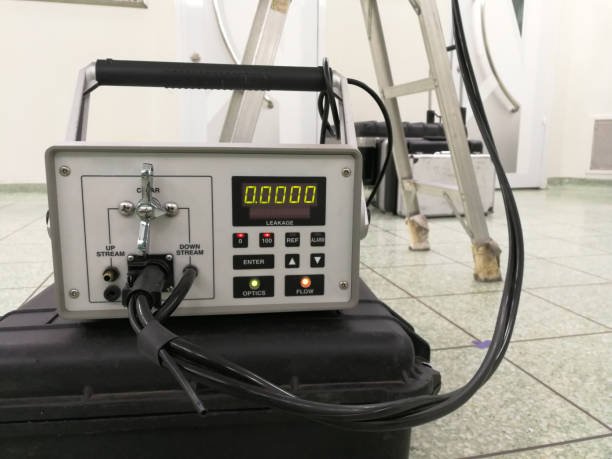Studying for exams can be a daunting task, especially when the material is complex or vast. Many students struggle with retaining information, organizing their notes, and maintaining focus. One effective technique for improving memory and enhancing study efficiency is the PAO system. This method has been widely used by memory champions and competitive mnemonists, but it can also be adapted to help students prepare for their exams. Let’s dive into how the PAO system works and how it can revolutionize your study habits.
What is the PAO System?
The PAO system stands for Person-Action-Object. It is a mnemonic device that involves associating pieces of information with a vivid image of a person performing an action with an object. The core idea is that our brains are exceptionally good at remembering visual images, especially when they are unusual or emotionally engaging. By leveraging this natural strength, the PAO system turns abstract or difficult-to-remember concepts into vivid, memorable scenes.
- Person: Choose a memorable person, real or fictional, to represent a specific piece of information.
- Action: Assign an action to that person, something they are doing or are known for doing.
- Object: Associate the action with a distinct object, which further ties the information together.
For example, if you are trying to remember the number 32, you might imagine Michael Jordan (the person) dunking (the action) a basketball (the object). This vivid and memorable mental image makes it easier to recall the number when needed.
How the PAO System Enhances Memory
The PAO system improves memory by utilizing three key principles:
- Visualization: Our brains are more adept at recalling images than raw data like numbers or abstract concepts. The PAO system transforms difficult-to-remember material into visual scenes, making it easier to recall.
- Chunking Information: The PAO system allows you to compress multiple pieces of information into one memorable image. By combining a person, an action, and an object, you create a compact mental representation of the material, allowing you to memorize more with fewer cognitive resources.
- Engagement of Multiple Senses: When you create a vivid mental image, it often involves more than just sight. You might “hear” the action, “feel” the texture of the object, or even “smell” something related to the scene. This multi-sensory engagement further strengthens memory retention.
How to Apply the PAO System to Different Subjects
One of the great things about the PAO system is its versatility. Whether you’re studying math, history, science, or languages, the PAO system can be adapted to suit the specific material you’re working with.
1. Math and Numbers
The PAO system is often used in memorizing long sequences of numbers, making it particularly helpful in subjects like math, statistics, or finance. Instead of trying to memorize a string of random numbers, you can assign a person, action, and object to each set of digits. For example:
- 45: Albert Einstein (person) writing (action) on a chalkboard (object).
- 23: Michael Jordan (person) dunking (action) a basketball (object).
Now, when faced with a sequence of numbers, you simply recall the mental images you created.
2. History and Dates
History often requires students to remember important dates and events, which can become overwhelming. With the PAO system, you can associate each significant event with a memorable image. For example:
- For the year 1492 (when Christopher Columbus sailed to America), you could imagine Columbus (person) sailing (action) in a giant globe (object).
- For the year 1776 (the signing of the U.S. Declaration of Independence), imagine George Washington (person) signing (action) a large quill (object).
By creating a memorable mental image for each event, it becomes easier to recall dates during exams.
3. Science and Formulas
Memorizing scientific formulas, chemical equations, or even biological processes can be a breeze with the PAO system. Let’s say you’re trying to memorize Newton’s second law of motion, F = ma (Force equals mass times acceleration). You could create a scenario where:
- Isaac Newton (person) is pushing (action) a giant massive boulder (object), which symbolizes force, mass, and acceleration.
This vivid image makes it easier to remember the formula and even understand the concept behind it.
4. Languages and Vocabulary
Learning new vocabulary can be one of the most challenging aspects of language learning. With the PAO system, you can associate each word with a person, action, and object. For example:
- For the French word “manger” (to eat), you might imagine a famous chef (person) cooking (action) a giant feast (object).
- For the Spanish word “correr” (to run), imagine Usain Bolt (person) sprinting (action) with a stopwatch (object).
By linking each word to a vivid image, you can retain new vocabulary more easily and recall it when needed during exams.
How to Create Effective PAO Images
While the basic concept of the PAO system is simple, creating effective and memorable images requires a bit of creativity. Here are some tips for crafting PAO images that stick:
1. Make it Unusual
The more outlandish and bizarre your mental images are, the more likely you are to remember them. Don’t be afraid to go over the top with your imagery. For example, if you’re trying to remember a specific chemical equation, imagine a scientist conducting an experiment in outer space with exploding planets as part of the reaction.
2. Use Familiar People
Choose people you’re already familiar with, such as celebrities, historical figures, or even close friends and family members. These people are already embedded in your memory, so it’s easier to associate them with new information.
3. Incorporate Emotions
If possible, make your images emotionally engaging. Whether the image makes you laugh, feel surprised, or even slightly grossed out, the emotional component will help cement the memory. For example, if you’re memorizing vocabulary, imagine something hilarious or surprising happening with the object or action.
4. Keep it Simple and Visual
Your PAO images should be straightforward and easy to visualize. If they become too complex, it defeats the purpose of simplifying the information. Keep the images distinct and memorable without overcomplicating the scenario.
How the PAO System Can Help During Exams
When it comes time for exams, the PAO system can offer significant advantages:
1. Rapid Recall
The most obvious benefit is that the PAO system makes it easier to recall information quickly. During a timed exam, you don’t have the luxury of spending several minutes trying to remember key details. By visualizing the images you’ve created, you can retrieve the necessary information almost instantly.
2. Improved Retention Over Time
Cramming the night before an exam might help you pass the next day, but it doesn’t promote long-term retention of the material. The PAO system, on the other hand, encourages deeper processing of information. The vivid images you create are more likely to stick with you over the long term, allowing you to retain knowledge beyond the exam.
3. Organized Information
The PAO system helps you organize vast amounts of information by compartmentalizing it into smaller, manageable chunks. By assigning specific people, actions, and objects to different concepts or categories of information, you create a mental “file system” that is easy to navigate during exams.
4. Reduced Stress and Anxiety
Exams can be stressful, especially when you’re unsure whether you’ve retained all the necessary material. The PAO system offers a sense of security because it provides a concrete method for recalling information. The process of visualizing engaging, often amusing scenes can also serve as a stress-relief mechanism, keeping you calm and focused during the test.
Conclusion
The PAO system is not just a tool for memory champions; it’s a practical, adaptable method that can significantly enhance your study habits. By turning abstract concepts into vivid mental images, the PAO system makes it easier to retain and recall information across a variety of subjects. Whether you’re studying for math, history, science, or languages, this method can help you better organize your notes, improve retention, and reduce stress on exam day.
Implementing the PAO system into your study routine might take some practice, but the payoff is worth it. Once you’ve created your mental library of people, actions, and objects, you’ll find yourself more confident, prepared, and equipped to ace your exams.
click Here to visit the website



